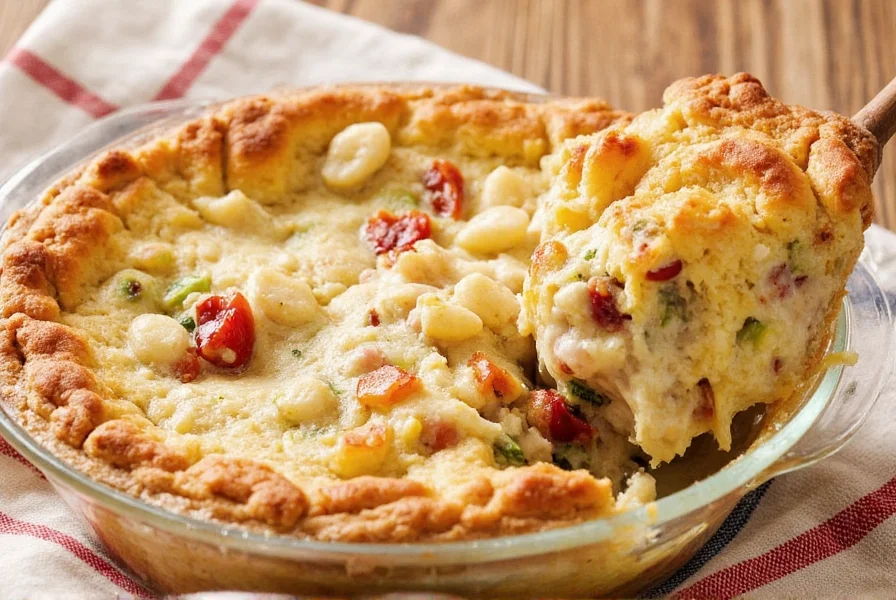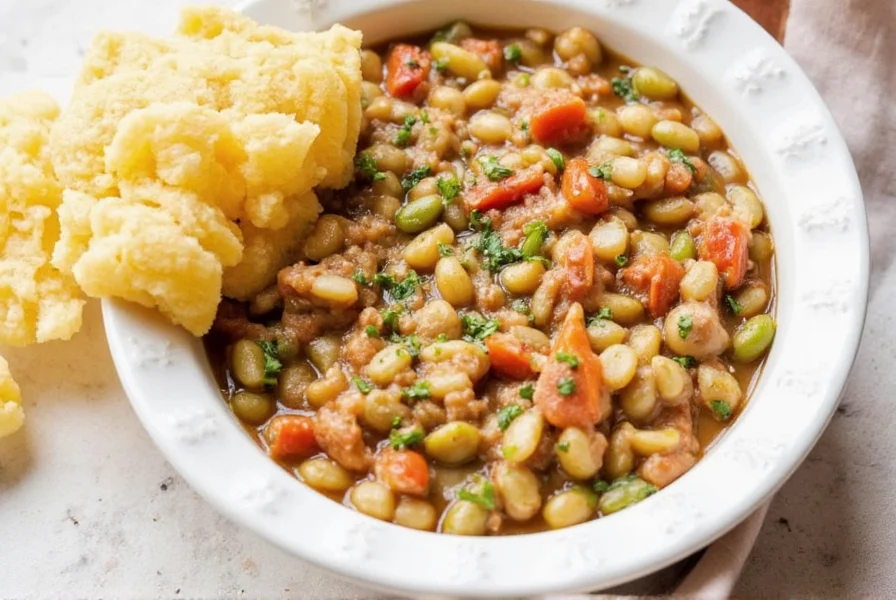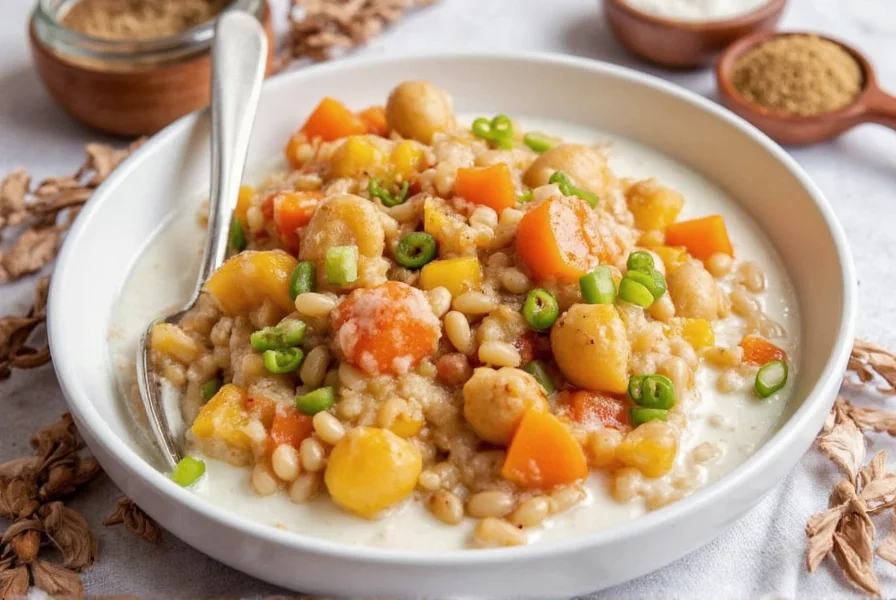Looking for an authentic Pennsylvania Dutch pot pie recipe? This step-by-step guide delivers everything you need to make a traditional, comforting pot pie with a rich, spiced filling and flaky crust. Learn how to prepare it from scratch, including key spice storage tips to maximize flavor and freshness.

Ingredients for Authentic Pennsylvania Dutch Pot Pie
- For the crust: 2 1/2 cups all-purpose flour, 1 tsp salt, 1 cup (2 sticks) cold unsalted butter (cubed), 6-8 tbsp ice water
- For the filling: 2 cups cooked chicken (shredded), 1 cup diced carrots, 1 cup diced potatoes, 1/2 cup diced celery, 1/2 cup diced onion, 3 cups chicken broth, 1/4 cup all-purpose flour, 1/4 cup butter, 1/2 tsp freshly grated nutmeg, 1/4 tsp allspice, 1 tsp black pepper, 1 tsp dried thyme, 1 bay leaf, salt to taste
Step-by-Step Instructions
Prepare the Crust
- In a large bowl, combine flour and salt. Cut in cold butter using a pastry cutter until mixture resembles coarse crumbs.
- Gradually add ice water, 1 tablespoon at a time, mixing until dough just comes together. Divide into two disks, wrap in plastic, and chill for 30 minutes.
Make the Filling
- Preheat oven to 375°F (190°C). In a skillet, melt butter over medium heat. Add onions, carrots, celery, and potatoes; cook until tender (8-10 minutes).
- Stir in flour to create a roux, then gradually whisk in chicken broth until thickened. Remove from heat.
- Add shredded chicken, nutmeg, allspice, black pepper, thyme, and bay leaf. Season with salt. Remove bay leaf before assembling.
Assemble and Bake
- Roll out one dough disk to fit a 9-inch pie dish. Place in dish and trim edges.
- Pour filling into crust. Roll out second disk for top crust, place over filling, and crimp edges to seal. Cut slits for steam to escape.
- Bake for 40-45 minutes until crust is golden and filling is bubbly. Let rest 15 minutes before serving.
| Spice | When to Add | Storage Tip |
|---|---|---|
| Nutmeg | Add to filling while cooking | Store whole nutmeg; grate fresh for maximum flavor |
| Thyme | Add dried thyme to filling | Keep in airtight container away from light |
| Allspice | Add to filling while cooking | Buy whole berries and grind as needed |
| Black Pepper | Add freshly ground to filling | Store in vacuum-sealed jar to preserve potency |
Why Proper Spice Storage Matters for Your Pot Pie
Spices lose potency quickly when exposed to light, heat, or moisture. For Pennsylvania Dutch pot pie, where spices like nutmeg and allspice define the signature flavor profile, proper storage ensures each bite delivers authentic, robust taste.
Here’s how to maximize your spice quality:
- Use amber glass jars to block UV light
- Store spices in a cool, dark cabinet (not near the stove)
- Label containers with purchase dates and replace ground spices every 6 months
Buying Guide: Essential Spice Storage Tools
| Product | Best For | Key Feature |
|---|---|---|
| OXO Good Grips POP Containers | Everyday home cooks | Air-tight seals and stackable design |
| Prep Naturals Glass Spice Jars | DIY spice blends | Amber glass blocks UV light |
| Joseph Joseph Stack & Tilt Organizer | Small kitchens | Tilted slots for easy visibility |
Frequently Asked Questions
What makes a pot pie "Pennsylvania Dutch" instead of regular pot pie?
Pennsylvania Dutch pot pies feature a distinctive thick, gravy-like filling with a higher ratio of vegetables to meat (typically chicken or turkey), and a signature blend of warm spices like nutmeg, allspice, and black pepper that create a subtly sweet-savory profile reflecting German-influenced Amish cooking traditions.
How much spice should I use for an authentic Pennsylvania Dutch pot pie?
For a standard 9-inch pie serving 6-8 people: ½ teaspoon freshly grated nutmeg, ¼ teaspoon allspice, 1 teaspoon freshly ground black pepper, and 1 teaspoon dried thyme. Always add spices gradually during cooking—taste and adjust before adding the final layer of crust.
Can I use fresh herbs instead of dried spices in this recipe?
Yes, but with adjustments. Use three times the amount of fresh herbs (e.g., 3 teaspoons fresh thyme instead of 1 teaspoon dried). Add delicate fresh herbs like parsley during the last 10 minutes of cooking. For nutmeg and allspice, dried versions work best in this traditional recipe.
How long will my Pennsylvania Dutch pot pie keep fresh with proper spice storage?
When stored in an airtight container in the refrigerator, leftovers stay fresh for 3-4 days. For best results, store spices separately from the pie—keep your spice jars away from the heat of your refrigerator. Properly stored spices ensure the filling maintains its rich flavor profile throughout reheating.
Why does my pot pie filling sometimes turn out bland despite using spices?
This usually happens because spices have lost potency from improper storage. Spices exposed to light, heat, or moisture degrade quickly. Always store spices in airtight containers away from your stove. Test freshness by rubbing a small amount between fingers—if you don’t detect a strong aroma, replace them. Fresh spices require less quantity to achieve vibrant flavor.
Can I prepare the spice blend ahead of time for my pot pie?
Absolutely! Pre-mix your Pennsylvania Dutch spice blend (1 part nutmeg, 1 part allspice, 4 parts black pepper, 2 parts thyme) in a vacuum-sealed jar. This preserves freshness for up to 6 months and ensures consistent flavor. Store the blend away from light and heat sources.
Conclusion
Your Pennsylvania Dutch pot pie’s true magic lies in balancing traditional ingredients with proper spice management. By following this detailed recipe and implementing smart storage practices, you’ll consistently create a dish that honors Amish culinary heritage while delivering rich, comforting flavor in every bite.












 浙公网安备
33010002000092号
浙公网安备
33010002000092号 浙B2-20120091-4
浙B2-20120091-4